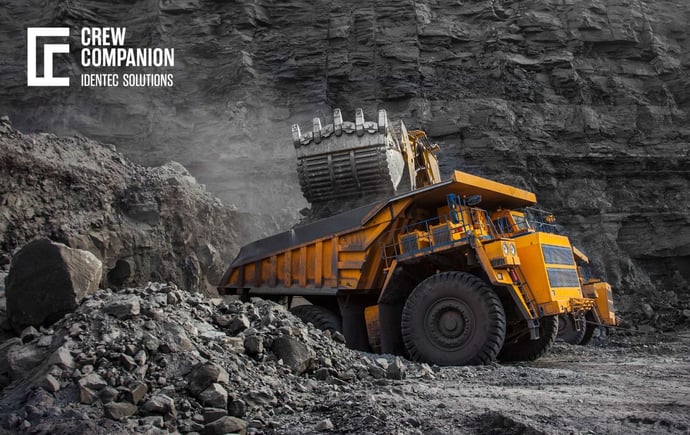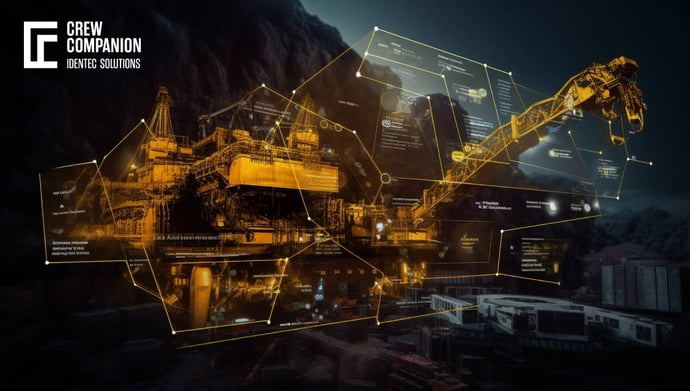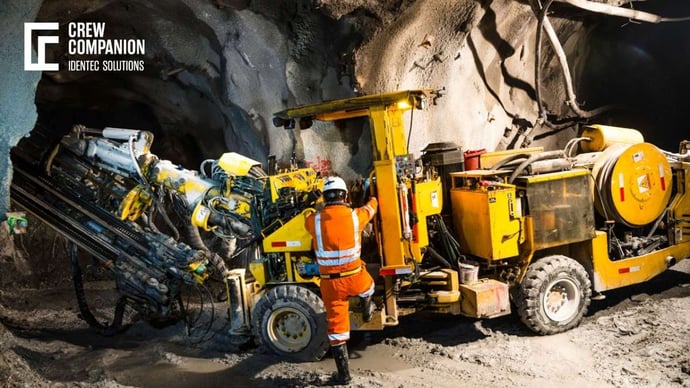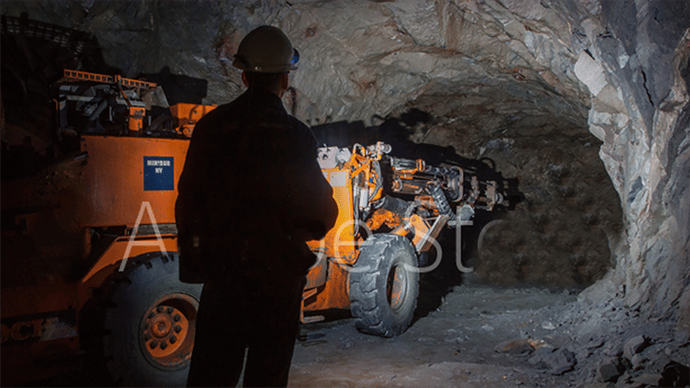Mining Industry Trends: Profitability, Sustainability, and Digitalisation
| Written by Mark Buzinkay

No video selected
Select a video type in the sidebar.
Mining Industry Trends: Is Profit More Important than the Planet?
In a world where technology rapidly transforms the way we live, the mining industry grapples with growing expenses and productivity roadblocks. With inflation creeping upward, mining magnates are pushed to think outside the box, scouting for novel strategies to keep cost fluctuation at bay and maximise profits. Simultaneously, geopolitical turbulence - the unrest in Ukraine springs to mind - coupled with persistent supply chain hindrances pile more complexities on the industry's platter.
Mike Scott, the business and sustainability journalist who wrote for The Guardian, The Times, Forbes, Fortune and Bloomberg, talks openly about the challenges (1). When most people consider mining's environmental impact, they typically think of water and air pollution, catastrophic events like the collapse of tailings dams, or the role of coal mining in global warming. However, mining metals such as copper, nickel, and cobalt are becoming crucial as we urgently search for ways to reduce emissions from other fundamental industries like steel, cement, and aluminium.
The World Bank projects that by 2050, the demand for metals and minerals essential for clean energy technologies—necessary to achieve the goals of the Paris Climate Agreement—will increase by nearly 500%. This surge in mining activity poses significant risks to nature and biodiversity. For example, conservation group Re:wild has recently highlighted that over a third of Africa's great apes are threatened by the increasing demand for minerals critical to green technologies.
The mining sector is also becoming more susceptible to the effects of climate change, which include heightened risks of flooding, heat waves, drought, and intensified competition for water resources. A McKinsey study indicates that between 30% and 50% of the production of metals such as copper, gold, iron ore, and zinc occurs in regions facing severe water scarcity, a situation expected to worsen. In Chile, for instance, 80% of copper production already takes place in areas of extreme water stress, with predictions that this will rise to 100% by 2040. Similarly, 40% of Russian iron ore production is projected to face severe water stress by the same year.
The industry has also experienced operational shutdowns due to water shortages from Brazil to Germany, resulting in significant financial losses. Reducing water usage in mining operations is essential for enhancing the resilience of production assets. Additionally, the sector must address other climate impacts, such as extreme heat and rising sea levels.
So, let's delve into the key future trends and topics of mining:
ESG
Looking at the playing field of risks and opportunities in the mining and metals arena, we find a fascinating interplay of priorities under the spotlight of an uncertain, ever-evolving world. ESG considerations are undeniably at the heart of this tug-of-war, blooming into broader and intricate challenges as the cry for enhanced transparency in reporting grows louder. The call for greater diversity, equity, and inclusion, as well as responsible mine closure strategies, may not be new tunes, but they sure are demanding to be played right.
Notably, the ESG landscape is transforming, demanding mining industry players to not only juggle but master a broader set of challenges. Because of our rapidly changing climate, water conservation and biodiversity are rising stars on the ESG stage. With stakeholders turning up the heat, solid reporting is instrumental in sidestepping greenwashing allegations and carving a niche in the market.
Geopolitics
This year, geopolitical factors have taken centre stage, fueled by worldwide conflicts and resource nationalism. This emerging rhythm requires mining maestros to delve deeper into the impacts of geopolitical movements on their strategic choreography. Consider Russia's recent incursion into Ukraine and the ripple effects on the energy and industrial commodities markets.
Navigating such a geopolitical minefield proves a tough act for mining and metal companies, especially when the lion's share of these elements is beyond their sphere of influence. The silver lining, however, could be found in strengthening ties with governments, fostering stakeholder collaboration, and exploring governmental incentives and co-investments.
Continue reading about mine security
Climate Change
As miners pencil in net-zero aspirations into their agendas, the roadmap to reach this goal often remains shrouded in fog. The urgency to report emissions and implement a swift decarbonisation plan is setting the stage for an intensified focus on mitigating climate change risks. Crucially, a more concerted effort is needed to tackle the tangible threats posed by climate change, such as wildfires and flooding, which potentially bring operations to a standstill.
Moreover, given the mining sector's significant footprint on greenhouse gas emissions, a monumental investment in renewable energy sources and all-encompassing energy planning is inevitable. Sure, the energy transition is a tightrope walk, but with the right balance, it can bolster global energy supply stability in volatile times.
Costs and Productivity
With the inflation pendulum swinging and talent costs skyrocketing, mining expenses are swelling, inevitably dampening expansion ambitions. Mitchell, an industry maestro, strikes a hopeful note, suggesting a duet of enhanced modelling and digital twins could unlock major productivity leaps. Companies can usher in sustainable cost-cutting strategies by harmonising cost management with long-term value and short-term gains.
Despite these hurdles, the industry's backstage buzz remains optimistic. If commodity demand and prices stand their ground, alongside a conducive policy environment and the elimination of physical infrastructure bottlenecks, a significant comeback might be on the horizon (read more about productivity in mining).
Supply Chain
Recent hiccups in the supply chain have sounded the alarm for an urgent overhaul. Organisations are putting the pedal to the metal, fine-tuning supply chains to withstand current volatility and spot efficiency, resilience, and transparency boosts. Miners are thus progressively turning to avant-garde, sophisticated methods to quell supply chain risks.
Allocating Capital and Building Workforces
The ever-changing demand landscape and investor expectations are conducting the melody of capital allocation strategies. While maintaining a firm grip on capital discipline, companies are scouting the horizon for growth and transformation investment opportunities. Simultaneously, the spotlight is trained on reskilling and upskilling workers, a strategy set to address talent droughts in the sector. Learn more about the mining workforce of tomorrow.
Embracing Technology
Traditionally slow on the uptake of new technology, the mining industry now stands at the threshold of a vast opportunity to strike gold through tech adoption. As the electric vehicle market charges ahead, commodities like lithium, copper, nickel, manganese, and cobalt are enjoying the limelight. This persistent demand is motivating the mining industry to further open the doors to digitalisation for optimal resource extraction.
Mining corporates are tapping into high-cost, productivity, and safety gains by embracing technology cutting edge, including drones, remote operation centres, and autonomous trucks. However, as the industry cha-cha-chas towards progresses, a more cohesive strategy throughout the value chain will be required to amplify returns and enable miners to tackle their trickiest challenges, such as ESG and productivity, with grace. Learn more about technology in the mining industry in the next section (see also: Mining digital transformation).
Mining Industry Trends: How does Technology advance?
In the undulating universe of mining, a terrain once characterised by hard hats, pickaxes and rumbling machinery, a digital dawn is unfurling. A wave of innovation is pushing the sector into a revolution, shaping the contours of one of the oldest industries of human civilisation. By the stroke of a new quill, we'll explore the profound paradigm shift underway in this once-traditional industry: the digital transformation of the mining sector.
The backdrop to our narrative is one of optimism; high commodity prices, an upward-trending business outlook, and burgeoning cash reserves have imbued miners with a renewed sense of confidence. Their eyes are cast towards the future, visionaries recognising the auspicious circumstances, ready to translate recent successes into investment in the promise of tomorrow. Their quest - to engineer growth, fine-tune production costs, refine the safety of the workfolk, and harmonise with the environment whilst honouring social and governance (ESG) commitments.
At the heart of this unfolding tale of transformation lie the enigmatic twins of our modern age: Artificial Intelligence and the Internet of Things. Playing out their parts, they've become the scriptwriters of new possibilities, the conductors of predictive maintenance, digital twins, and robotics. All these underpin the new reality of agile operations, enabling miners to tune production as nimbly as a maestro, responding in harmony to the fluctuations of commodity prices.
Yet, in the midst of this euphoric symphony, a sobering refrain lingers. Digital initiatives, while pregnant with promise, often birth a lesser ROI than anticipated. The vast swaths of data generated remain untapped, like hidden veins of precious metals, largely because the process of collection and analysis resembles a slow, ponderous waltz rather than the swift, agile dance required for timely decision-making.
But the path to the future isn't strewn with mere obstacles but challenges that contain the seeds of solutions. One such opportunity lies in the richer utilisation of existing technological investments. An even more valuable treasure can be unearthed by embracing changes that foster greater value. Essential to this voyage is the navigation towards improved organizational coordination and collaboration and the development of a refined data strategy, the compass guiding miners towards operational enhancements.
Peering into the data mines of today, miners are striking it rich, not with gold or gems, but with information. As such, before diving into the technological future, the industry must pause and contemplate how to harness its existing data assets for optimal decision-making. Automated tools, cloud storage, and data convergence emerge as the pivotal characters in this chapter, promising the ability to draw out meaningful insights from the rich data deposits, making it more accessible and cohesive.
While it's tempting to conceive of digital transformation as a grand odyssey, smaller, incremental steps can provide quick wins and contribute significantly to overall progress. Such steps can offer low-cost solutions, propelling improvements in critical performance indicators such as profitability, safety metrics, cost per tonne of production, and ESG targets. These bite-sized victories are akin to the glittering specks in a gold-panner's tray that accumulate to form a significant treasure.
A focus on digitisation is undeniably a priority for many executives in the mining sector. However, miners must delve deeper to truly extract the full bounty from this digital era. They must cultivate unique capabilities that deliver value in a manner that distinguishes them from the crowd. This necessitates a holistic journey, embracing every element of transformation – from reassessing strategies and streamlining cross-functional processes to automating mundane tasks and fostering digital trust.
In an era where technology is the new gold rush, miners must guard against cyber threats. Understanding their vulnerabilities and implementing comprehensive security solutions is as vital as ensuring the structural integrity of a physical mine. Equally important is the shaping of a future-ready workforce that can navigate this digital landscape. By carefully pacing the transformation and prioritising talent development, miners can ensure they're not merely surviving but thriving in the digital age (continue reading about personnel tracking and safety)
This chronicle of digital transformation, as enthralling as it is, isn't the end of the mining saga. It's merely a chapter in a much broader narrative, one that speaks of an industry's journey from the grit and dust of the mines to the pixels and data of the digital age. The miners of today are not only extracting resources from the Earth but are also unearthing new possibilities for innovation. Their tools are no longer just pickaxes and dynamite but data and digital systems.
In this landscape of relentless progress, the mining industry's commitment to digital transformation represents a golden opportunity to shape the future. It's a narrative filled with promise and potential and one we'll be eager to revisit as the story continues to unfold.
FAQ Section
What challenges are currently facing the mining industry?
The mining industry is dealing with a variety of complex issues. They are grappling with the impacts of inflation, supply chain interruptions, geopolitical upheaval, like the situation in Ukraine, and the subsequent effects on the energy and industrial commodities markets. Furthermore, environmental, social, and governance (ESG) considerations are more critical than ever, with issues like water conservation, biodiversity, diversity, equity, and inclusion, and responsible mine closure strategies gaining prominence. Climate change poses another significant threat, with mining operations potentially being disrupted by natural disasters like wildfires and flooding.
How is technology transforming the mining industry?
Technology is playing a crucial role in reshaping the mining industry. The sector is adopting advanced technologies such as Artificial Intelligence, Internet of Things, predictive maintenance, digital twins, and robotics to fine-tune production costs, enhance safety measures, and meet ESG commitments. Technology is helping to improve operational efficiency, allowing mining companies to quickly adjust to commodity price fluctuations. However, the key to maximising these benefits lies in better utilisation of existing tech investments, enhanced organisational coordination, collaboration, and the development of a refined data strategy.
How is the mining industry addressing the challenges posed by climate change?
Climate change has necessitated the inclusion of net-zero aspirations in the agendas of mining companies. However, achieving this goal requires clear emissions reporting and implementing swift decarbonisation plans. The industry acknowledges the importance of a coordinated effort to tackle the tangible threats posed by climate change, such as wildfires and flooding. One key aspect of this strategy involves significant investments in renewable energy sources and comprehensive energy planning to bolster global energy supply stability in volatile times.
Key Takeaways
- Navigating Costs: Mining is battling with rising expenses, necessitating creative cost-control strategies and robust supply chain management.
- Focus on ESG: ESG considerations are more important than ever, ranging from diversity and inclusion to environmental conservation. Authentic ESG reporting is key.
- Addressing Geopolitics: Mining is influenced by complex geopolitical factors. Opportunities lie in stronger government ties and collaboration.
- Climate Change Commitment: Steps towards net-zero emissions are critical to the industry's survival and contribution to a sustainable future.
- Embracing Tech: Technological advances, like AI and digitalisation, promise significant cost, productivity, and safety benefits but require a strategic approach across the value chain.
- Workforce Development: Changing demand and investor expectations highlight the importance of capital allocation and talent management strategies, including reskilling and upskilling (learn more about mine safety equipment).
- Securing the Future: As mining digitises, cybersecurity measures and a future-ready workforce become increasingly essential.
Dive deeper into one of our core topics: Miner Safety
Glossary
Digital twins - are virtual replicas of physical assets, structures, or operations used in mining. These digital models provide real-time data and insights, allowing businesses to optimize operations, anticipate challenges, and make data-driven decisions. By simulating different scenarios, mining companies can reduce operational costs, minimize downtime, and improve efficiency.
One key advantage of digital twins is predictive maintenance. By forecasting equipment failures, companies can perform timely repairs, extending machinery lifespan and preventing costly interruptions. Additionally, geological analysis through digital twins helps identify unstable areas, ensuring worker safety through proactive reinforcement. In emergencies, digital twins provide real-time data to response teams, enabling faster, more effective decision-making and potentially saving lives. They also aid in sustainability efforts, monitoring emissions and resource consumption to reduce environmental impact. Furthermore, digital twins enhance drilling efficiency, optimize resource use, and improve productivity while lowering costs, making mining safer, more sustainable, and more profitable. (2)
Sources:
(1) https://www.reuters.com/sustainability/climate-energy/esg-watch-why-climate-change-is-leaving-mining-firms-between-rock-hard-place-2024-04-23/
(2) https://www.toobler.com/blog/digital-twins-in-mining
Note: This article was updated on the 14th of May 2024

Author
Mark Buzinkay, Head of Marketing
Mark Buzinkay holds a PhD in Virtual Anthropology, a Master in Business Administration (Telecommunications Mgmt), a Master of Science in Information Management and a Master of Arts in History, Sociology and Philosophy. Mark spent most of his professional career developing and creating business ideas - from a marketing, organisational and process point of view. He is fascinated by the digital transformation of industries, especially manufacturing and logistics. Mark writes mainly about Industry 4.0, maritime logistics, process and change management, innovations onshore and offshore, and the digital transformation in general.




